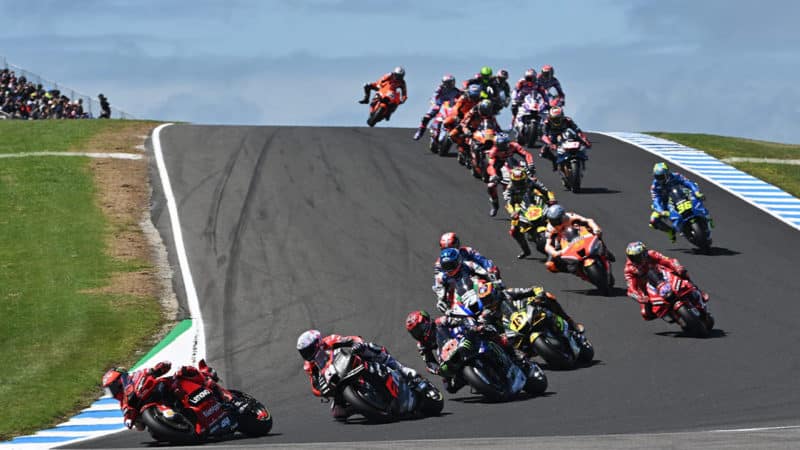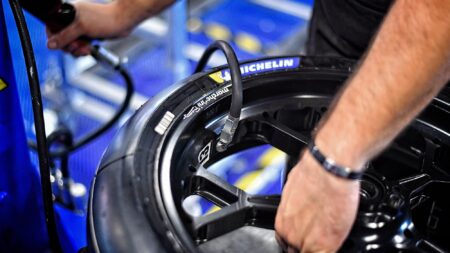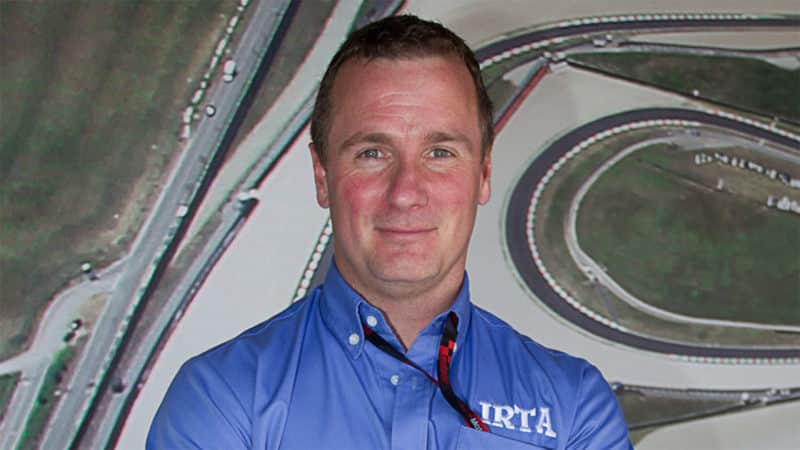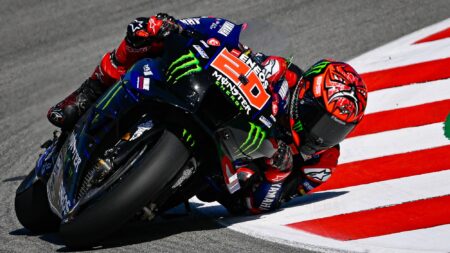To stay legal riders need to keep above the minimum limit for at least 50% of a grand prix. The rule will also apply in qualifying, when riders will lose any lap when they’re under pressure. Qualifying infractions will be immediately communicated to teams, so they can tell their rider to go again. In Saturday’s new sprint races the minimum pressure will need to be reached for between 30 and 50% of race distance, depending on the number of laps.
By the way, the limit for the rear tyre is 1.7 bar, but rear pressure is rarely, if ever, a concern.
Michelin may slightly lower the front minimum from 1.9 to 1.88 bar for 2023, with the limit possibly changing fractionally from one circuit to another, according to track and weather conditions. The company doesn’t want to go much lower than 1.88 due to concerns over damage to tyre casings, even though riders have run a few tenths lower without problems.
What effect will the enforcement of the pressure rules have on the racing?
“I think with this kind of limitation we will see less show, less overtaking,” says Diego Gubellini, crew chief to 2021 MotoGP champ Fabio Quartararo. “Because if you cannot go under a certain limit then you will suffer more when you are following another rider, then you cannot overtake him, even if you are faster, so I think this isn’t the best solution for the show.”

Michelin’s rear slick – rear tyre pressure is rarely, if ever, an issue in MotoGP
Michelin
There’s already less overtaking in MotoGP than there used to be, so if Gubellini’s prediction is correct, this is another concern for the championship, which is fighting to rekindle interest.
Michelin’s front slick has caused high-pressure problems for riders for at least five years, but increased machine performance – thanks to more straight-line speed, stronger brakes and, most of all, downforce aero – has made the situation much worse.
The problem is at its worst when a rider is chasing a rival, because once the following rider gets close, the heat from the leading rider’s machine overheats the chasing rider’s front tyre, raising tyre pressure and reducing grip. There is really only one thing the second rider can do in this instance: slow down, wait for the pressure to drop (all MotoGP bikes have pressure gauges on the dash), then try again.
“Even before all this we had front-tyre pressure problems, but you could come out of the slipstream and survive,” adds another engineer. “Now, with the extra speed of the bikes and all the downforce, it’s become much more critical because of the extra load on the tyre.”







